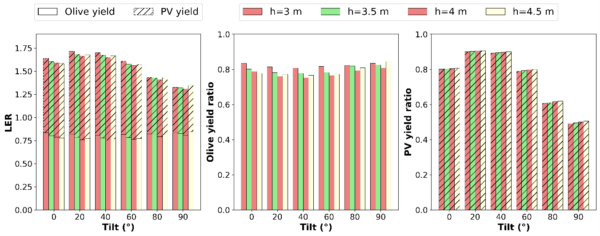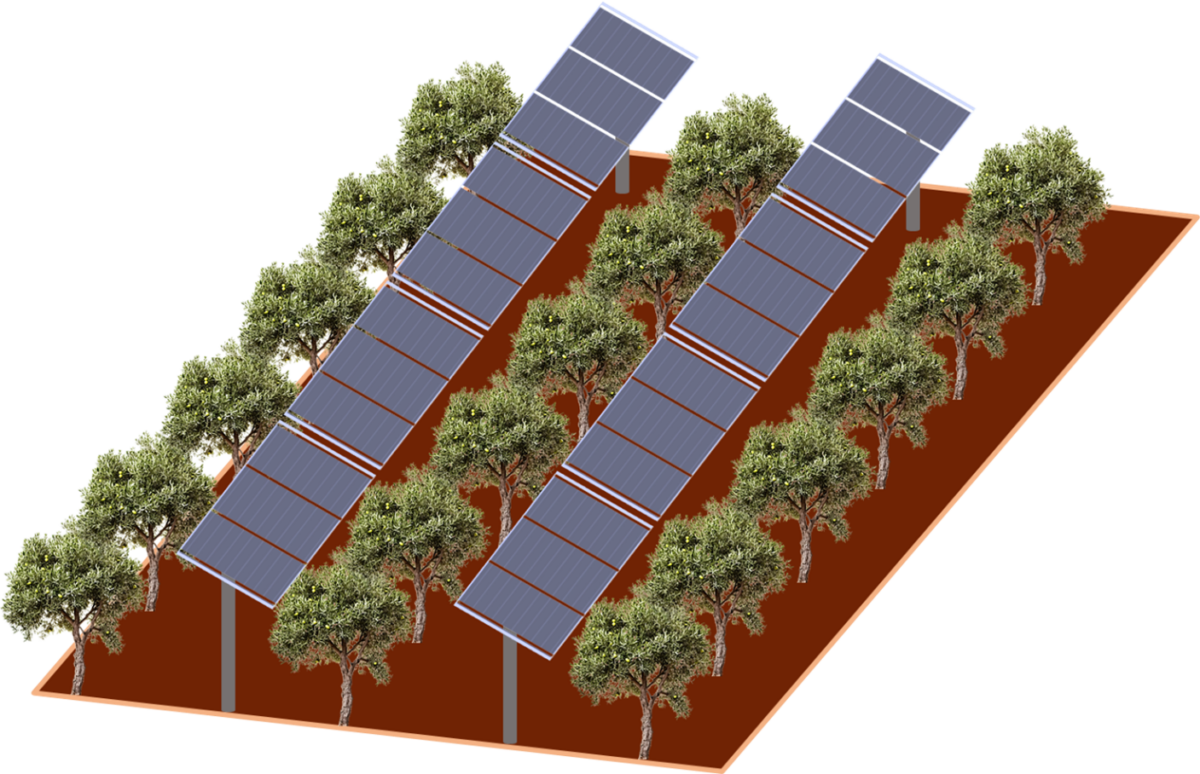A group of scientists from Spain’s University of Jaén and Italy’s Sapienza University of Rome has investigated how bifacial agrivoltaic systems can be combined with olive growth in an effort to improve both power and agricultural yields. “By considering three distinct olive varieties (Picual, Manzanilla, and Chemlali) and exploring various configurations of bifacial PV systems, the research aims to optimize the overall yields of energy generation and olive production,” said the researchers.
“Contrary to conventional expectations, a vertical inclination of PV modules proves to be optimal for maximizing the yield of olive trees,” corresponding author, Elmehdi Mouhib, told pv magazine. “This unexpected finding highlights the nuanced interplay between PV module orientation and the agricultural productivity of olive trees within agrivoltaic systems.”
The research group tested different system configurations depending on the solar modules' tilt angle and height. The scenarios were analyzed in a software simulation and modeled using the raytracing approach, which accounts for how light interacts with objects.
For the simulations, the academics assumed a bifacial agrivoltaic system operating in the southern Spanish city of Jaén, with irradiance and temperature values of a typical meteorological year. The simulated farm had an area of 860 m2, corresponding to a rectangular shape with a length of 41.42 m and a width of 20.76 m. It accommodated eight rows of olive trees and seven rows of PV in a super-intensive cultivation approach.
“In this type of olive farming, the trees are typically arranged in a rectangular layout with a planting pattern of 4–5 m × 2–3 m, thus providing sufficient room between rows to accommodate PV modules,” they explained. “Super-intensive plantations require moderately sloping soils, which facilitate the installation of PV structures.”
In their simulation, the tree trunks have a radius of 0.25 m and a height of 1 m, while the crown has a radius of 1 m and a height of 1.5 m. The total height is considered to be 2.5 m, which represents the average height of olive trees in this cultivation approach. The bifacial models were assumed to have a size of 1.755 m x 1.038 m and to be placed on hubs with a minimum height of 3 m to ensure the movement of harvesting machines.

Image: University of Jaén, Applied Energy
“The amount of solar radiation that reaches the rear side of the bifacial PV module is directly linked to the albedo coefficients of both the trees and the ground,” the scientists added. “In this study, the broadband albedo used for trees is 0.309. Also, the light soil was used as ground albedo with a broadband albedo of 0.25.”
The temperature was set to 21 C and the humidity was 40%, with the simulation assuming 16 hours of light per day. To calculate the yield of the olive trees, the response of gross carbon assimilation to absorbed light was assessed. That indicates the quantum efficiency of photosynthesis in olive trees, which shows how well they convert light energy into chemical energy.
Each setup was measured with tilt angles of 0, 20, 40, 60, 80, and 90 degrees, and hub heights of 3 m, 3.5 m, 4 m, and 4.5 m. The three olive varieties were chosen due to their different light responses, as they prevail in various geographical areas. Picual olives are predominantly found in Jaén, Manzanilla olives are endemic to Spain’s Seville, and Chemlali olives can be found in various Mediterranean countries, particularly Tunisia.
“Overall, the results indicate that the variation in tilt angle has a greater impact on the PV yield, while the variation in PV module height primarily affects the yield of olive trees,” the researchers stated. “The findings indicate that PV modules tilted near the site’s latitude achieve the highest energy yield, while vertically-oriented modules lead to the greatest olive yield.”
Peak land equivalent ratio (LER), which quantifies the land productivity of the combined energy and crop outputs, was 171% of what each system would produce individually if implemented separately in the same area. It was achieved at a tilt angle of 20 degrees and 3 m. The lowest LER was achieved at 90 degrees, at a height of 4 m.
“The assessment of olive tree varieties reveals a moderate dependency on shading, making all varieties suitable candidates for agrivoltaic applications,” the researchers concluded.
The findings were introduced in the paper “Enhancing land use: Integrating bifacial PV and olive trees in agrivoltaic systems,” published at Applied Energy.
This content is protected by copyright and may not be reused. If you want to cooperate with us and would like to reuse some of our content, please contact: editors@pv-magazine.com.



2 comments
By submitting this form you agree to pv magazine using your data for the purposes of publishing your comment.
Your personal data will only be disclosed or otherwise transmitted to third parties for the purposes of spam filtering or if this is necessary for technical maintenance of the website. Any other transfer to third parties will not take place unless this is justified on the basis of applicable data protection regulations or if pv magazine is legally obliged to do so.
You may revoke this consent at any time with effect for the future, in which case your personal data will be deleted immediately. Otherwise, your data will be deleted if pv magazine has processed your request or the purpose of data storage is fulfilled.
Further information on data privacy can be found in our Data Protection Policy.